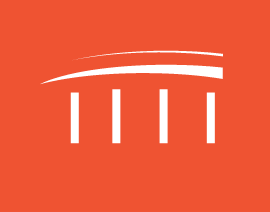
It is too late to apply under the CARES Act Paycheck Protection Program, but another chance to borrow has been rolled out under new legislation.
Learn More About PPP Second DrawOn June 5, 2020, President Trump signed into law the Paycheck Protection Program Flexibility Act of 2020 (the “Flexibility Act”), which makes some changes to the existing program originally created under the Coronavirus Aid, Relief, and Economic Security (CARES) Act. The key changes made by the Flexibility Act are as follows:
- The program’s general covered period is extended from June 30, 2020 to December 31, 2020.
- Paycheck Protection Program (“PPP”) loans can be obtained at any time until December 31, 2020.
- As of June 4, 2020, approximately $120 billion is still available to be loaned.
- The loan repayment period is at least 5 years, but only for loans made after the enactment of the Flexibility Act. The repayment period still cannot exceed 10 years. The Small Business Administration (SBA) will determine the repayment period in upcoming guidance.
- For PPP loans made prior to enactment of the Flexibility Act, the repayment period is still 2 years).
- Borrowers and lenders can renegotiate existing loans to have a maturity that matches whatever the maturity will be once set by the SBA.
- The forgiveness covered period, which was 8 weeks from the date the PPP loan is received, now ends on the earlier of 24 weeks after the loan is received or December 31, 2020.
- If a borrower received loan before the Flexibility Act is enacted, the borrower can elect to continue to use the 8-week covered period.
- If a borrower receives a loan after the enactment of the Flexibility Act, it appears the borrower must use the 24-week/December 31, 2020 period.
- The CARES Act said that any reduction in employee headcount or salary/wage reduction could be cured by June 30, 2020. Such cure period now ends December 31, 2020.
- Loan forgiveness will be determined without regard to a reduction in the number of full-time equivalent employees if the borrower, in good faith, can document it is unable to:
- Rehire individuals who were employees on February 15, 2020,
- Hire similarly qualified employees for unfilled positions on or before December 31, 2020, or
- Return to the same level of business activity that the business was operating before February 15, 2020, due to compliance with requirements established or guidance issued by the Secretary of Health and Human Services, the Director of the Centers for Disease Control and Prevention, or the Occupational Safety and Health Administration during the period beginning on March 1, 2020, and ending December 31, 2020, related to the maintenance of standards for sanitation, social distancing, or any other worker or customer safety requirement related to COVID-19.
- To receive forgiveness, a borrower must use at least 60% PPP funds for payroll costs. Thus, up to 40% can be used on non-payroll costs (mortgage interest, rent, utilities). Find more on this below in the Questions section.
- The current 6-month deferral of payments of principal and interest on non-forgiven amounts is changed. Now, payments of principal and interest on non-forgiven amounts is deferred until the date that payment of the SBA-guaranteed amount is remitted to the lender by the SBA.
- However, if a borrower fails to apply for forgiveness within 10 months after the end of the covered period, then such borrower must immediately begin making loan payments.
- The CARES Act contained a provision that payment of 2020 payroll taxes were deferred until December 31, 2021, and December 31, 2022, with 50% of the 2020 taxes being due on each such date. But, the CARES Act also said that such deferral was not allowable for any taxpayer who receives PPP loan forgiveness. The Flexibility Act removes this exclusion. Therefore, borrowers who receive PPP loan forgiveness can now defer payment of 2020 payroll taxes.
Questions
Inevitably when a new law like the Flexibility Act is enacted, additional questions arise. Here are some questions we have but do not necessarily have answers to yet, along with some general comments:
1. If a borrower elects to use the 24-week covered period, how does this affect the rules relating to individuals with $100,000 compensation, as prorated during the covered period? Does that mean employees can now be paid up to $46,154 during the covered period and such amount will eligible for forgiveness?
Currently, any amount paid to any employee in excess of $15,385 during the 8-week period is not forgivable (8/52 x $100,000 = $15,385). With a 24-week covered period, $100,000 prorated for such period is 24/52 x $100,000 = $46,154.
2. What about self-employed, etc.?
Recent guidance from the SBA states that the maximum amount of forgivable compensation paid to self-employed, etc. is capped at 8/52 of the 2019 compensation amount. Presumably such cap will now be 24/52 of the 2019 compensation amount, but we do not yet know for sure.
3. The Flexibility Act says: “To receive loan forgiveness under this section, an eligible recipient shall use at least 60 percent of the covered loan amount for payroll costs…” Does that mean that the entire amount is not forgivable if, say, the borrower uses only 50% for payroll costs?
Under current guidance, a borrower who spends, say, 70% on payroll costs and 30% on non-payroll costs can have all the payroll costs forgiven, but forgiveness is capped at 25% of non-payroll costs. However, the Flexibility Act suggests that the entire loan will not be forgiven if more than 40% of PPP funds are used for non-payroll purposes. Was this the intent?
4. What if a borrower’s original 8-week period is already ended? Does the Flexibility Act automatically extend it to 24 weeks?
CPM believes the answer is yes, the 24-week period is now automatic since it struck the 8-week language from the Act and changed to it 24 weeks (or December 31, 2020, whichever is earlier). Furthermore, the Flexibility Act says a borrower can “elect” to use the original 8-week period. It does not say borrowers can elect to use the 24-week period. The SBA will likely provide clarification soon.
5. How does a borrower “elect” to use the original 8-week period?
6. What if a borrower has already applied for forgiveness? Can it rescind the application?
Some borrowers’ 8-week covered period ended just this week. With the forgiveness application having been made available, there may be some borrowers that applied for forgiveness prior to passage of the Flexibility Act.
7. The Flexibility Act says if a borrower fails to apply for forgiveness within 10 months after the end of the covered period, then such borrower must begin making principal and interest payments. Does that mean no forgiveness at all if the application is made later than 10 months after the end of the covered period?
8. The Internal Revenue Service (IRS) has stated that expenses paid with PPP proceeds that are ultimately forgiven will not be deductible to the borrower. But with the covered period now running until the end of 2020 and the ability to wait up to 10 months to apply for forgiveness, it is possible that 2020 tax returns will be filed prior to determining the forgivable amount.
A borrower in this situation is faced with having ordinarily deductible expenses that will not be deductible if the loan if forgiven, but the return on which deduction is to be claimed is due before the forgiven amount is known. This will be an important issue for SBA and/or the IRS to address, though it is not currently the most pressing issue.
Carlile Patchen & Murphy LLP (CPM) will work to keep you updated on any new developments. In the meantime, if you are interested in learning more about the Paycheck Protection Program Flexibility Act of 2020 or other newly enacted law, please contact your CPM attorney with any questions.




0 Comments